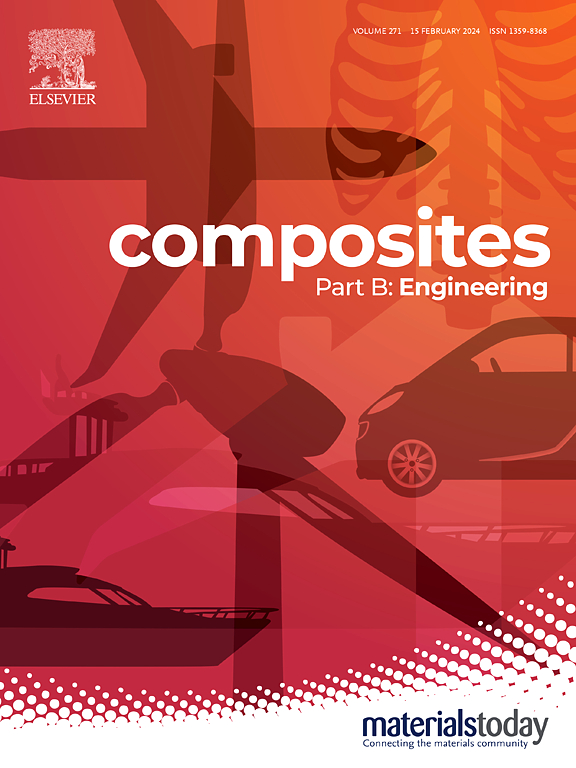Preform variability propagation in non-crimp fabric (NCF) forming
IF 12.7
1区 材料科学
Q1 ENGINEERING, MULTIDISCIPLINARY
引用次数: 0
Abstract
Eliminating wrinkles generated during the manufacturing of structures made from composite materials is challenging due to large material and process variabilities. In this work, an effort is made to quantify the wrinkling variability when forming dry non-crimp fabric (NCF) and to correlate this with measured material (and process) variabilities. A forming cell instrumented with a multi-camera 3D digital image correlation (DIC) system was built to enable precise reconstruction of the morphology of the formed 3D preforms and any wrinkles that occur. Quantification of wrinkles and their variability was conducted and their (lack of) correlation with the NCF material's macro-scale shear and bending behaviour was analysed. Meso-scale material and process variabilities were also measured and quantified. This was followed by a sensitivity analysis on their effect on wrinkling variability and highlighted the prime importance of tow-orientation and fabric pre-shear. This work deepens the understanding of NCF wrinkling behaviour and open the door to the development of more accurate modelling tools and digital twin systems that can help robustly eliminate wrinkles.
在非卷曲织物(NCF)成形过程中预成型变异性的传播
由于材料和工艺的巨大变化,消除复合材料结构制造过程中产生的褶皱是一项挑战。在这项工作中,努力量化在形成干燥无卷曲织物(NCF)时的起皱变异性,并将其与测量的材料(和工艺)变异性相关联。采用多摄像头三维数字图像相关(DIC)系统构建了成形单元,能够精确重建成形的三维预成形件的形态和出现的任何褶皱。对起皱及其可变性进行了量化,并分析了它们与NCF材料宏观剪切和弯曲行为的相关性(缺乏相关性)。中尺度材料和工艺变化也被测量和量化。随后,对它们对起皱变异性的影响进行了敏感性分析,并强调了低取向和织物预剪的首要重要性。这项工作加深了对NCF起皱行为的理解,并为开发更精确的建模工具和数字孪生系统打开了大门,这些工具和数字孪生系统可以帮助消除皱纹。
本文章由计算机程序翻译,如有差异,请以英文原文为准。
求助全文
约1分钟内获得全文
求助全文
来源期刊

Composites Part B: Engineering
工程技术-材料科学:复合
CiteScore
24.40
自引率
11.50%
发文量
784
审稿时长
21 days
期刊介绍:
Composites Part B: Engineering is a journal that publishes impactful research of high quality on composite materials. This research is supported by fundamental mechanics and materials science and engineering approaches. The targeted research can cover a wide range of length scales, ranging from nano to micro and meso, and even to the full product and structure level. The journal specifically focuses on engineering applications that involve high performance composites. These applications can range from low volume and high cost to high volume and low cost composite development.
The main goal of the journal is to provide a platform for the prompt publication of original and high quality research. The emphasis is on design, development, modeling, validation, and manufacturing of engineering details and concepts. The journal welcomes both basic research papers and proposals for review articles. Authors are encouraged to address challenges across various application areas. These areas include, but are not limited to, aerospace, automotive, and other surface transportation. The journal also covers energy-related applications, with a focus on renewable energy. Other application areas include infrastructure, off-shore and maritime projects, health care technology, and recreational products.
 求助内容:
求助内容: 应助结果提醒方式:
应助结果提醒方式:


